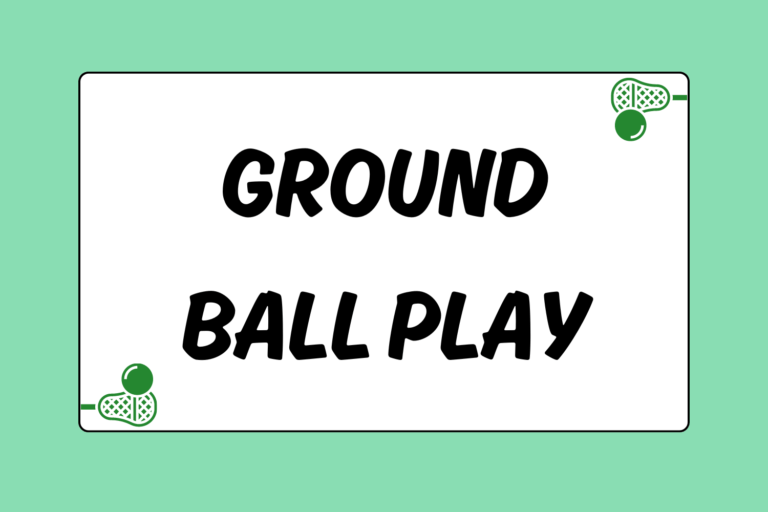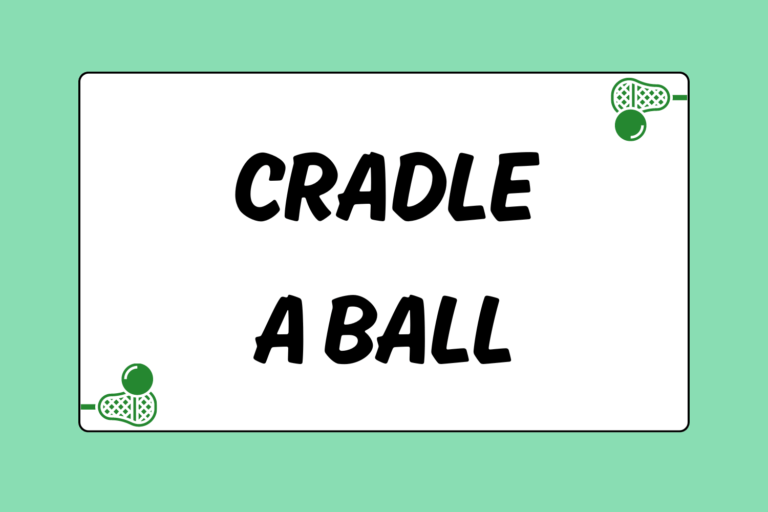Let’s face it – lacrosse equipment is expensive. You have to be sure you really want to commit to the game long-term before going out and spending a couple hundred bucks on gear. Fortunately for you, lacrosse is quite addictive, and odds are that you’ll be hooked from day one. Buying your new gear is a big step toward becoming a full-fledged laxer. So let’s take a look at how/where/why to buy all your gear.
Required equipment for lacrosse players includes: Stick, helmet, mouth guard, shoulder pads, arm pads, gloves, and protective cup. Many retailers offer package deals for new players that give you a discounted rate on a full set of equipment, including helmet, but often these products are not the best quality, and you may find yourself wanting better gear before long.
The Stick
A nice stick should definitely be the first thing on your shopping list. It’s not vital to get a top-of-the-line stick as your first, but you will want to go a level up from the beginner sticks sold by many manufacturers. These beginner sticks usually don’t afford the player a very nice pocket and in turn, don’t hold the ball very well. Go a step up and look to spend somewhere in the $60-to-$80 range for a stick head. A few minutes of online browsing will usually be good enough to find a decent head on sale for close to that price range. Make sure to get your head pre-strung, as a beginning laxer would have a very hard time stringing a head into anything resembling a real pocket. As far as shafts go, stay with the standard aluminum option until you have progressed enough that you need a lighter or stronger one. A nice shaft runs somewhere in between $60 and $100.
Most players prefer hard mesh for their pocket material, as it’s the most durable, easiest to maintain and won’t get too bagged out over time the way soft mesh tends to do. Another choice is traditional stringing, which very few players still use, but is a very viable option. Traditional pockets give the player a great feel of the ball in their stick. Plus, they look sweet! The argument against traditional stringing for a new player is that it is much harder to maintain or mend, and it’s really hard to find someone who knows how to work on this style of pocket.
Gloves
Second on your priority list should be a nice pair of gloves. If you’re debating whether to cash out on the expensive pair of gloves, it’s probably worth it. Be ready to spend around $100 on a good pair. A nice pair of flexible, yet protective gloves can really make a difference in how you play (and how your hands feel after going one on one with a ravaging defenseman!). The cheaper gloves tend to be very stiff, which can negatively affect your throwing, scooping and stick handling.
Established companies like Warrior, STX and Brine all make very high-quality gloves, and even the sneaker giants such as Nike, Reebok and Adidas are getting involved in lacrosse gear now, as they all produce gloves. Other companies that produce good gloves include Gait and Maverik.
Make sure you get the right size. High school players will probably want an adult 12”, or if you’re one of the really big boys, a 13”. Players younger than high school age probably will want to get a pair of youth-size gloves, which also run a bit cheaper, but then you run the risk of out-growing them quickly. If you are having trouble deciding what size to get, try on a friend’s pair and see how it feels. Most gloves have the size listed somewhere on the inside of the wrist area. If you’re going to be cheap about certain pieces of equipment, don’t make it the gloves! Gloves are a vital piece of protective gear and allow you to have a good feel on the stick as you handle the ball. Once you’ve purchased your new gloves, make sure to wear them any time you throw the ball around, as this will prepare you for wearing them during a game.
Arm Guards
The type of arm guards preferred by players varies greatly depending on who you ask or what position you play. The high-end pads can run you over $100, but you can also find some pretty average ones for around $50 – and honestly, there isn’t much difference between the high-end and mid-grade arm pads, aside from the aesthetics. As far as brands go, there really isn’t much difference in the quality offered by the various equipment makers. Arm guards are certainly the easiest piece of equipment to save money on, since the high-end guards don’t offer significantly more protection or comfort than the mid- or low-end ones. As you play more and more, you’ll get used to the pounding your arms take, and you’ll eventually be “comfortable” taking a check on the arms and might not even notice that huge, purple and green bruise that comes with it.
For the most part, attackmen prefer the big bulky guards that offer the most protection against aggressive defenders throwing vicious checks. If protection is your main concern when buying arm guards, be sure to get some that offer more padding, rather than just getting a larger size. Nothing can be more annoying to a laxer than excessively large pads that slip down the arms and have to be adjusted while running around worrying about the ball staying in your pocket.
Midfielders can go either way. Some prefer lighter and smaller arm pads, and don’t mind wearing a few checks on their bare forearms. Other middies that handle the ball a lot like the larger and more protective ones. Should you choose to play midfield, and you’re feeling timid about being checked on the arms, the bulky ones are probably your best bet.
Defensemen almost always wear the smallest arm pads available, since they are rarely on the receiving end of checks (plus they always think they’re the toughest dudes on the team). This leaves them open to bruised arms from the baseball swings of all the attackmen who refuse to play real body defense on rides. Then again, most D-men don’t really seem to care about that, and some even seem to enjoy it!
Shoulder Pads
Shoulder pads are another piece of equipment with which different players prefer different styles. Again, as with arm guards, the attackmen usually prefer the shoulder pads that offer them the most protection from stick and body checks. These types tend to be a bit bulkier and can slightly restrict your upper body and arm movement, but certainly do much in the way of limiting injuries. Other players prefer their shoulder pads to be as small as possible, as this allows them maximum range of motion in the upper body and arm areas. Many models offer detachable bicep guards in addition to the shoulder protection. Be prepared to pay anywhere between $50 and $150 for shoulder pads.
The large pads will cost you significantly more money, but are worth it because of the way they protect your shoulders from injury (and make you look way bigger and tougher with the uniform on over them!).
The smaller pads resemble “shock pads” worn by football players, which are basically liners for their real shoulder pads. The rules of lacrosse state that some sort of padding must be worn on the shoulders. So if you’re OK with taking a little bit of a pounding, then smaller pads are the ones for you, as they are very light and don’t really restrict movement.
Goalie Gear
Despite their propensity for getting hit by the ball, goalies actually wear a little bit less gear than normal field players. The difference is that goalies wear a chest pad similar to that of a baseball catcher, rather than shoulder and arm protection. In addition to a chest pad, goalies must gloves and a throat protector attached to their helmets.
Most new model chest pads also offer a little bit of shoulder padding, but some still do not. As with field players, some goalies may feel that the extra padding limits their movement, and won’t want this style anyway. The most expensive chest pads will run somewhere around $150, but cheaper ones can be purchased for closer to $50. As with the arm guards, there isn’t that much of a difference between the high-end and low-end pads, and going with the cheaper alternative may be your best bet.
There isn’t much variety in the makes of throat guards, so don’t worry too much about which one you get. Just make sure it will comply with your make of helmet.
As for the gloves, most companies make a goalie version of their most popular styles. The goalie versions tend to have extra padding on the thumb area, and some even have a little extra padding that protrudes out on the wrists. It isn’t really important to buy the goalie version, as regular field gloves pretty much do the trick. However, if you want the little bit of extra padding, then by all means get ‘em!
Helmets
The helmet is the most expensive and probably last piece of equipment you should be looking to purchase. Even the cheapest helmets will cost around $150. Most teams provide players with helmets in team colors and with team logos. If you are going to buy your own, there are a few things to consider, like concussion protection, price and weight. The helmets that offer the most concussion protection (Ridell) are usually the heaviest ones. Some players aren’t bothered by the weight, but many others would list this as a major factor in what helmet they will wear. The most expensive helmets cost around $220. If you’re going for style points, Cascade is the brand worn by players in Major League Lacrosse, and as far as comfort goes, this helmet is vastly superior to other makes. Cascade has been making lacrosse helmets for many years, and this is the brand preferred by most veterans.
Footwear
Now that AstroTurf has been phased out at many fields around the country, cleats are the preferred footwear for laxers. If your team plays on field turf, molded cleats are probably your best bet. The turf specific shoes also work well on this surface. For grass fields, detachable cleats are nice, because the cleat length can be changed to accommodate overly wet or dry fields. The major shoe companies (Nike, Warrior/New Balance, Under Armour) are starting to make lax-specific cleats and turf shoes, but many players also like the soccer- or football-style shoes. Since different types of shoes offer different advantages to players, let’s take a look at the various styles.
- Soccer: These are always low-top and are very lightweight. They’re great for fast players who do a lot of running, like midfielders, and some attackmen. The downside is that they offer little ankle support for those in need.
- Football: There are a few different types of football shoes. “Speed” shoes resemble soccer cleats, and are very small and lightweight, and usually of low-top style. “Mid” style offers more ankle support, without sacrificing too much in the area of lightness. Both styles are available in molded or detachable. Football cleats offer a little bit more cushioning, and are more apt to taking a pounding, day in and day out.
- Baseball: These spikes aren’t recommended for lacrosse players, because they’re specifically designed for running and planting on a dirt baseball surface. In addition, they don’t fare particularly well on the popular field-turf surfaces on which lacrosse is being played these days. Also, they don’t offer the cushioning of soccer or football cleats.
High-end lacrosse footwear can cost upwards of $190, but a quality pair of shoes can be found for much closer to $75 or $90, sometimes much lower. You won’t really know the difference between those and the high-end ones once they’re broken in. Detachable cleats will almost always cost more than the molded variety.
Worth Every Penny
Even though equipment costs may seem daunting at first, the money will definitely be well spent. There is no need to buy it all at once, but some pieces are undoubtedly more important than others (gloves, cleats). Be sure to buy quality gear to get the most value for your money. A good set of equipment will last a long time and should enable you to be a more confident player out there on the field.





